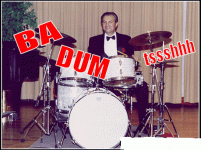On the question of lack of progress in sporting optics, my perspective being that of a person who started paying attention in the very late 1980s, I disagree. Maybe, if you only use bins for slow-paced scanning of distant objects, you could think that little progress has been made. But if you are a birder (and/or butterflyer), who wears glasses, and who enjoys fast and furious close-range viewing in tricky dense brush and forest situations, then you'll know that the average bin off the shelf, and even the alphas, are far more capable today than they were 20 years ago. For example, average specifications for close focus, FOV, eye relief etc are quite different than they were back then. Except at the very bottom, it's hard to find a really bad binocular for birding these days. Back then, it was easy.
Most of the innovation has been in improving the quality and reducing the cost of manufacture of mid-priced roofs. Today's bread and butter (for the marketplace) waterproof, close focus, color correct, high eye relief, wide-field roofs didn't exist in the early 1990s. The wide-field part of that equation (i.e. budget 8x42 roof with 420 ft FOV rather than 330 ft FOV) didn't become available until very recently (for many years, the Bushnell 7x42 Discoverer was the only budget roof with long eye relief and a wide field).
Obviously, there is an upper limit to what can be accomplished with optics, so improvement in bins at the top has been more modest. But much progress has been made with respect to their overall functionality and ergonomics.
Porros like the Nikon 8x32 SE and 8x30 EII are among the best birding porros ever made, and their optics are very nice, but they are nothing very special optical engineering-wise, and they certainly don't represent all-out efforts at optimization of the entire package for birding, with their poor hang, lack of waterproofing, and relatively slow focus that stiffens in the cold. The only reason they stand out is because other companies didn't even try to execute even to the level that Nikon chose to for those products (presumably for marketing reasons, not for lack even of existing technology to do so). Dedicated butterflyers thank Pentax every day for the Papilio, which is based on old technology, but which is a unique design or at least conceived product actually deployed for manufacture. We didn't have anything like it in the 1990s--in fact, butterflying through binoculars hardly existed back then, for near lack even of bins that would focus closer than 12 feet or so,
Top-end roofs have definitely improved in the time I've been paying attention. Eye-relief and close-focus are much improved. Focus ratios also tend to be better for birding than in the late 1980s and early 1990s. Hang and handling characteristics are on average better (I like open hinge designs). And with respect to optical improvement, the brightness/contrast and color accuracy of today's best roofs tend to be much better than they used to be. Sure, Zeiss was doing quite well in those respects way back, especially with its 7x42 Classic, but check out the brightness and color correctness of the early production Leica BA Ultra Trinovids, the first iterations of the Swarovski SLCs, the original and second generation B&L Elites, and the best of Nikon's roofs from back then (i.e. the Execulite line, and the Classic Eagle). Even cheap and mid-priced roofs of today blow those early to late 1990s era alphas away when it comes to brightness and color accuracy. I'm not saying that the older alphas aren't great bins, even now (they tend to be very restful on the eyes because they tend to be well aligned and free of brain-tiring distortions and optical field idiosyncracies), but today's alphas are definitely even better. In fact, today's alphas like the Swarovski EL and upcoming Zeiss SF are pretty much exactly what I was hoping to find in a premium bin in the early 1990s but couldn't (though the Zeiss 7x42 was close, at least for birding). So I'll admit that I'm not concerned to see much improvement in (non-IS) alpha bins beyond them, except, of course

through the addition of variable-ratio focus.
--AP





